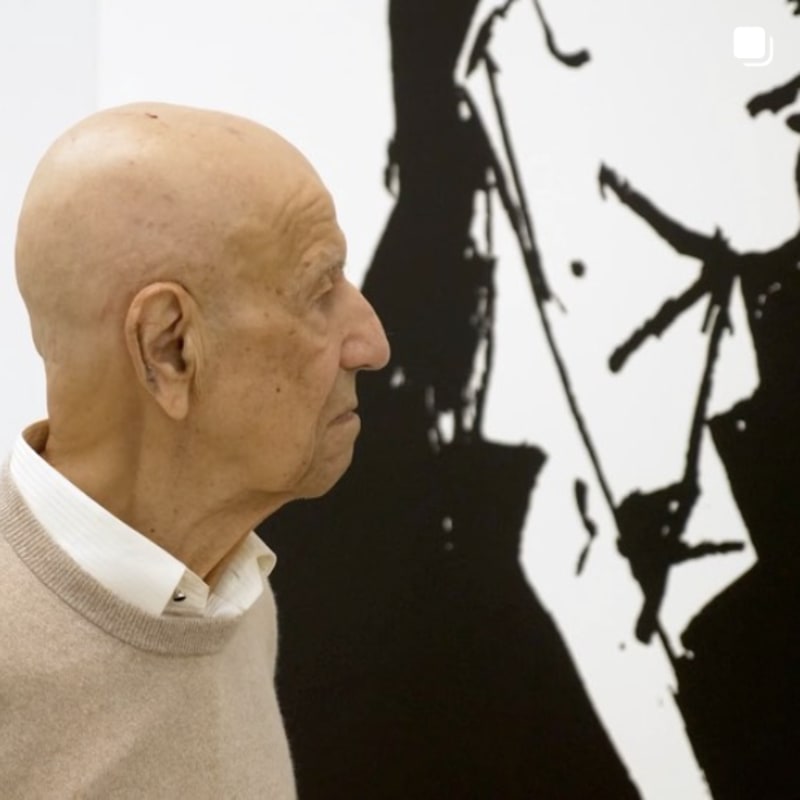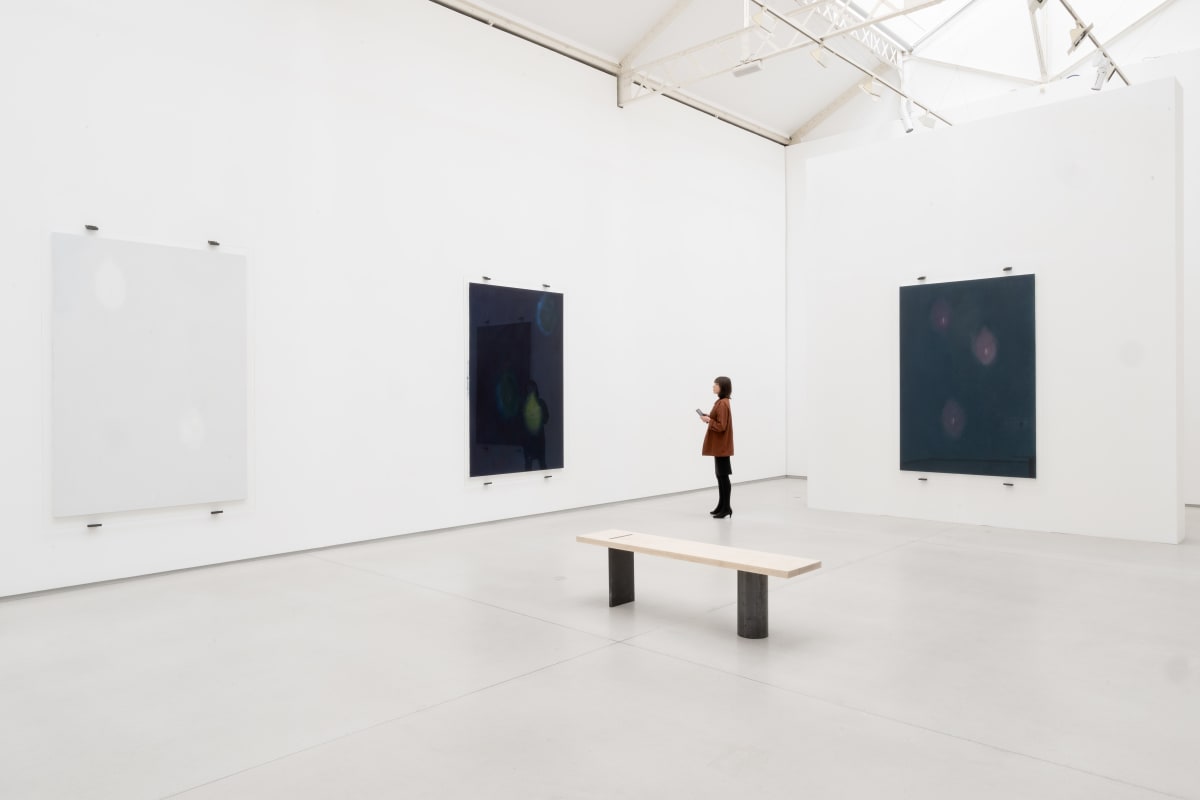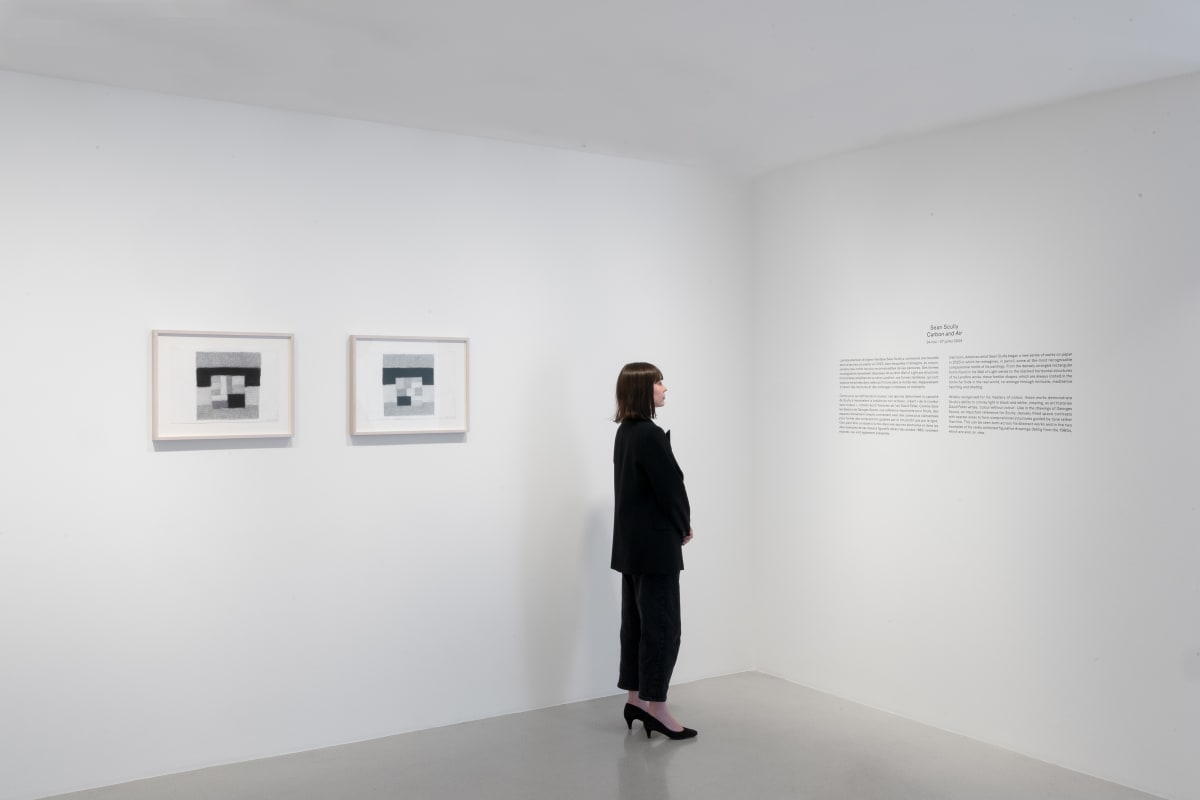타데우스 로팍 서울은 특유의 대담한 색채와 역동적인 제스처가 돋보이는 추상 문법으로 미술계에 깊은 영향력을 행사한 이탈리아 추상화가 에밀리오 베도바(Emilio Vedova)의 국내 첫 개인전을 개최한다. 이번 전시에서는 1980년대 초부터 2000년대 중반까지 약 25년에 걸친 작가의 작품세계를 집중적으로 조명해 선보인다. 이 기간동안 특히 증폭된 그의 예술적 어휘는 동료 화가이자 절친한 친구 게오르그 바젤리츠(Georg Baselitz)를 비롯한 후대 신표현주의 작가들에게 지대한 영향을 미쳤으며, 그의 영향은 현대까지도 이어지고 있다.


The earliest works in the exhibition date to the first years of the 1980s, which mark a pivotal moment in Vedova's artistic practice. At the start of the decade, he undertook a transformative research trip to Mexico. Deeply affected by the immense landscapes, smells and colours he encountered on his travels, as well as José Clemente Orozco's politically charged murals, he moved away from the black-and-white palette that dominated his works in the 1960s and 1970s to embrace colour and monumentality.
이번 전시에서 선보이는 회화들은 색, 그리고 제스처가 불가분의 관계로 얽혀져 있다. 그 중에서도 1980년대에 제작된 작품들은 작가의 예술 인생을 조망했을 때 단연 주축이 되는 작품들이다. 당시 베도바는 작품 연구를 위해 멕시코로 향했다. 특히 그곳에서 마주한 광활한 풍경과 냄새, 다채로운 색감, 그리고 호세 클레멘테 오로스코(José Clemente Orozco)의 정치적 색이 짙게 묻은 벽화는 작가에게 깊은 울림을 주었는데, 이는 당시 그의 1960-70년대 작품에 지배적이었던 흑백 색조에서 벗어나 보다 강렬한 색채와 필치가 전면으로 드러나는 계기가 되었다.
Untitled, 1982
Acrylic paint, nitro paint, pastel, charcoal, sand and cement on canvas
200 × 300 cm (78.74 × 118.11 in)
Courtesy of the Fondazione Emilio e Annabianca Vedova.

Untitled, 1983
Acrylic paint, pastel, cement and sand on canvas
160 x 290 cm (62.99 x 114.17 in)


Born into a family of Venetian artisans in 1919, Vedova was almost entirely self-taught as an artist. He learnt to draw by sketching the interiors of Baroque churches. He copied works by the great Venetian masters, particularly Tintoretto (1518–94), who united colour and light in sensual expressions of the human condition. Inspired by Tintoretto’s dramatic treatment of luminous space, Vedova offset his vivid hues of red, yellow and green with gestural sweeps of black and white paint, reimagining the conventions of Venetian painting through his own visionary lens of abstraction.
1919년 베네치아의 장인(匠人) 가문에서 태어난 베도바는 예술가로서의 재능을 스스로 키워 나갔다. 그는 바로크 양식으로 건축된 교회 내부를 스케치하며 그림을 배웠고, 베네치아의 거장들, 특히 빛과 색을 결합함으로써 감각적으로 인간 조건을 표현했던 틴토레토(Tintoretto)의 작품을 모방하며 연구에 매진했다. 틴토레토의 극적인 공간 처리법으로부터 영감을 얻은 베도바는 빨강, 노랑, 초록의 선명한 색채 위에 흑과 백의 물감으로 자신의 제스처를 수놓아 균형을 맞추었는데, 이는 베네치아 화풍의 관습을 작가만의 관점과 방식으로 재정립한 것이다.
Tintoretto
L’Ultima Cena (The Last Supper), 1592–94
Oil on canvas
365 x 568 cm (143.70 x 223.63 in)
Basilica di San Giorgio Maggiore, Venice
Emilio Vedova
Untitled, 1983
Acrylic paint, charcoal, pastel, sand and cement on canvas
Now the mist is falling,
an atmosphere thought propitious
I always re-find the Venice of the mists –
Do you know what it is to be born in Venice?
— Emilio Vedova
이제 안개가 내리고 있다,
상서로운 분위기
나는 항상 안개의 베니스를 다시 찾는다 –
베니스에서 태어난다는 것이 어떤 것인지 아는가?
— 에밀리오 베도바

Throughout his career, Vedova maintained his conviction in painting as a human act rooted in bodily performance. Unlike the unconscious or purely formal drive understood to underpin other forms of post-war abstraction – such as American Abstract Expressionism and European Art Informel – each gesture was, for Vedova, the result of a clear and conscious process. ‘My works are filled with structures,’ he explained, ‘these are the structures of my consciousness.’
베도바는 화가로서의 생애 동안 회화가 신체적 퍼포먼스에 뿌리를 둔 인간의 행위라는 신념을 유지했다. 베도바가 형상하는 제스처는 무의식이나 형식적 추진으로부터 출발하는 전후 추상, 예컨대 미국의 추상표현주의나 유럽의 앵포르멜에서 주창하는 바와는 다르다. 작가에게 각각의 제스처는 명확하고 의식적인 과정의 결과였으며, 이에 대해 그는 ‘내 작업은 구조로 가득 차 있다. 이들은 내 의식의 구조이다.’라고 덧붙였다.
Untitled, 1983
Acrylic paint, sand and pastel on canvas
129.5 x 89 cm (50.98 x 35.04 in)


Gestures, not images – assail you, they fall upon you.
— Emilio Vedova
이미지가 아닌 제스처가 당신을 공격하고, 덮친다.
— 에밀리오 베도바
Emilio Vedova
Untitled, 1990
Acrylic paint and nitro paint on canvas
57 x 78 cm (22.44 x 30.71 in)
Emilio Vedova at work in his studio, Venice, 1982.
Photo: Graziano Arici.
Courtesy of the Fondazione Emilio e Annabianca Vedova

Presented alongside works from the 1980s and 1990s are those from 2006, made in the final year of the artist’s life. These canvases are more intimate in scale, yet retain Vedova’s characteristic dynamism as his bodily exertions were re-centred on the range of mark-making made possible through direct hand contact. Here, colour itself gains form as a vehicle for embodied gesture as handprints and finger marks are drawn through thick layers of impasto, leaving behind traces of the artist’s presence.
작가는 끝까지 화업을 놓지 않았는데, 이번 전시에서 1980-90년대 부터 그가 작고한 해인 2006년에 제작된 작품들도 함께 선보인다. 직접적으로 손과 신체적인 움직임을 통해 형성된 베도바의 특징적인 역동성은 작품에서 캔버스 안에서 다시 집중적으로 나타난다. 일련의 작품 위에서 색은 제스처를 구현하는 매개체로써 형태를 이루고, 두터운 물감 위에 지나간 손과 손가락 흔적은 작가의 존재를 여실히 드러낸다.
Ciclo 2006, 2006
Oil paint on canvas
40 x 50 cm (15.75 x 19.69 in)

Vedova understood his energetic application of materials to be a ‘release of inner propulsion’ that lay bare the emotional and psychological impulses at the heart of human behaviour – an impetus rooted in the revolutionary nature of his earlier political works of the 1960s and 1970s.
베도바는 넘치는 활력이 느껴지는 매체 활용을 곧 인간 행동의 중심에 있는 정서적, 그리고 심리적 충동을 드러내는 ‘내적 추진력(propulsion)’의 방출로 수용했으며, 이는 정치적 성격을 띠던 1960-70년대 작가의 초기작과도 연결된다.
Ciclo 2006, 2006
Oil paint on canvas
70 x 90 cm (27.56 x 35.43 in)
The fight for me is physiological. It is a way of reference, [of] all understanding. Clashes – to better feel how much life, how much death. It is precisely for the opposites, in constant comparison, that I am most able to centre my work of expression.
— Emilio Vedova
내게 싸움은 생리학적인 것이다. 참고할 수 있는 하나의 방법이자 모든 이해로 통하는 길이다. 충돌은 인생이 얼마나 방대한지, 죽음은 얼마나 깊은지를 이해하기 위함이다. 정반대의 것을 끊임없이 비교하면서 비로소 내 작품 표현의 중심을 잡을 수 있다.
— 에밀리오 베도바


















































































































































































